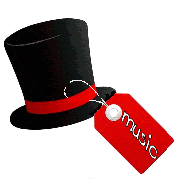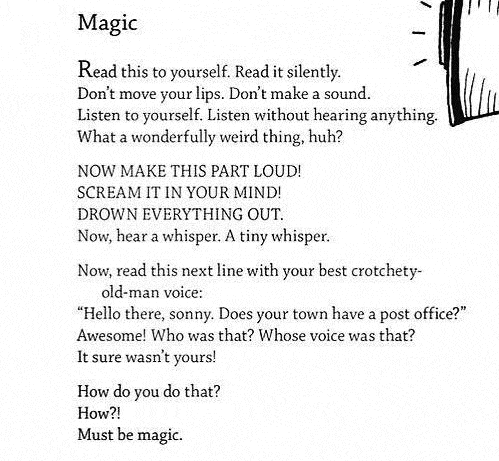 Sadly, many of our colleagues in less-enlightened schools are asked to take responsibility for teaching a particular strand of the curriculum during their time with students, often in that time when they are covering teacher preparation and planning time. And while that can be a way to embed the information literacy skills that are an integral aspect of each strand of the Australian Curriculum, often the teaching and learning becomes a content-building exercise and tends to be limited to subjects like Science, Geography, History or Humanities and Social Sciences, or in some cases covers the broader elements of the General Capabilities and Cross-Curriculum Priorities and those Key Learning Areas become the stand that the hat is pinned on.
Sadly, many of our colleagues in less-enlightened schools are asked to take responsibility for teaching a particular strand of the curriculum during their time with students, often in that time when they are covering teacher preparation and planning time. And while that can be a way to embed the information literacy skills that are an integral aspect of each strand of the Australian Curriculum, often the teaching and learning becomes a content-building exercise and tends to be limited to subjects like Science, Geography, History or Humanities and Social Sciences, or in some cases covers the broader elements of the General Capabilities and Cross-Curriculum Priorities and those Key Learning Areas become the stand that the hat is pinned on.
But what if we looked at some of the other strands, like Music for example? How can we cover the intended outcomes while enriching the students’ knowledge of and appreciation for literature, showing them that in real life some things have no artificial boundaries?
Yes, we can get students to research the lives of various musicians or investigate the instruments of the orchestra. But maybe there is a broader brush we can use. What if we took this poem by Bo Burnham and changed the last line to “Must be music!” And then got them involved in investigating how authors build the characters in their stories into credible beings that the reader cares enough about to want to read to the end of the story to see what happens to them.

Magic – Bo Burnham
In Prokofiev’s classic Peter and the Wolf, each character – Peter, his grandfather, the bird, the cat, the duck and the wolf, even the soldiers – is assigned an instrument of the orchestra which represents them as the story is told. For instance, the bird is portrayed by the jaunty music of the piccolo, while the deep, slow notes of the bassoon signal Grandpa. Using that as a starting point, why not have the students begin to look at characterisation in stories through a musical lens?
Take the poem and having become familiar with the sounds of the various instruments, what would they suggest as being the best to portray the shouting, the screaming, the whispering, or even the crotchety old man? How does the pitch, the tone, the speed and the volume of each instrument contribute to painting that visual picture through sound?
Share Roald Dahl’s description of The BFG walking down Sophie’s street, doing something suspicious at each window, or another piece of description about a familiar character. What sort of music would suit the action and what instrument would make it?
When they are reading about their favourite character what music do they hear in their head? If the story is about a giant or a dragon or a fairy, or a group of children sneaking through the bush, what instrument and type of music do they associate with each? Which characters that they already know would be best suited being represented by the violin, for example, and what would the music sound like? Fast, slow, soft, loud? Have them think about not just the size of the character and its other physical attributes, but the way it moves, even what its position and motive in the story are. Is it friendly or sinister? All can contribute to the choices.
Have them think about themselves and their own personalities and consider which instrument would best represent them> Is their one that fits all their moods or would it change with circumstance? Would there be a different choice for early in the morning and leaving a warm bed to go to school to that of the afternoon when it is play time or even later, tired and getting ready for bed? Even if the instrument remains the same, how does the music it makes change?
Conversely, play a piece of music such as “In the Hall of the Mountain King” from the music accompanying Peer Gynt by Edvard Grieg and have them suggest the sort of characters that they see in their mind’s eye just by listening. Does it suggest fairies and butterflies or something else? Can they draw what they are visualising?
Or maybe share some of the classic ballet suites such as “Swan Lake” or “The Nutcracker“. How has the composer distinguished between each character to make both an aural and visual picture? How has the choreographer translated this into a kinesthetic picture?
Then, take their developing knowledge even further and have each student select an instrument and build a character around it, creating a signature tune like those in Peter and the Wolf and then in groups of three or four, have them meld their characters into a cohesive story that can be told in both print and sound.
From this beginning, it is not a giant leap to comparing mood and music to build the story’s atmosphere… which instruments portray dark and gloomy, ominous and imminent, light and fancy-free? Have them listen to the musical scores of film or television shows to discover how the action and atmosphere is underscored by the piece of music that underpins it. Set them a task to select or even create the opening music to a favourite story so the reader has an idea of what is coming….
If we want our students to be both critical and creative readers, to engage with the story on a deeper level beyond the printed word or visual image they see, then this sort of approach not only does that but also satisfies a number of the outcomes of the music curriculum in a way that even the most non-musical like me can enjoy and appreciate – and makes such a change from the same-old, same-old that many students expect when it is time for “library”.